Mushi-shi: Volume 4 (UK) (DVD)
Introduction
Spooks and spectres figure strongly in Japanese folklore, there is a strong sense of spirituality and communion with nature that resonates all the way to modern entertainment, and it's no surprise that Hollywood is now aping many Eastern horror films in order to breathe life into the putrid corpse of their entertainment industry. Naturally this fascination with the supernatural is a strong source of inspiration for manga and anime, and scarcely a year goes by that there aren't ten or so such spooky series debuting in the UK market alone. You would think that with the abundance of vampires, ghosts, demons and spirits that there would come a point when the average anime fan would have seen it all, and would have nothing left to gain from yet another such series. But then Mushi-shi turns up for review, unlike anything I have seen before, and offering a new perspective on the supernatural.
Mushi are the most primitive of life forms. Elusive and ethereal, and existing since time immemorial, they have come to be the cause of many superstitions and supernatural legends. Ginko is a Mushi-shi, a Mushi Master. He travels the country investigating these odd creatures, and helping those people who, for good or ill wind up interacting with them. Four more episodes are presented in this eagerly awaited fourth volume, released by Revelation.
15. Pretense Of Spring
It's the middle of winter, snow covers everything, and Ginko needs a place to spend the night. He knocks on the door of brother and sister Miharu and Suzu, and finds another mushi-based quandary. Three years ago, when food was scarce, Miharu who can see mushi himself, went looking through the snow for food. He found an oasis of greenery in the winter desert that provided him with food, but at a price. Now when he comes back with food, he winds up sleeping until the spring. This, and his fascination with the mushi worry his sister, and she asks Ginko for his help.
16. Sunrise Serpent
It's the height of Spring, and people are neglecting their chores and lazing around, forgetful of their responsibilities. An old man on a boat complaining of his wife failing to cook him breakfast piques the interest of Ginko, who asks if she is having trouble sleeping. It turns out to be a dead end, except the combination of insomnia and memory loss means something to the boatman. Kaji has noticed the same thing with his mother, who is forgetting all sorts of trivia from her life, yet cannot sleep a wink. But this problem may be beyond Ginko's skills.
17. Pickers Of Empty Cocoons
The mushi masters use an ingenious method to communicate. The Uro is a mushi that makes its home in the cocoons of silk worms. To the average person the cocoon seems empty, but they in fact contain Uro, and the people that harvest the cocoons are warned to leave the empty ones behind. The Uro are fearful of light, and quickly vanish into the space between cocoons. On occasion there is a rare double cocoon, and when the silk from this is wound into two separate cocoons, the Uro is limited to travelling between just the two. The enterprising mushi-shi can use this to send messages between two people. It takes a special person to do the work of creating these cocoons, and it was a rare coincidence that twin sisters Aya and Ito shared the ability. But when Uro hide, they have a tendency to drag all that is close to them into the dark spaces with them, and one day, a moment of inattentiveness led to Ito vanishing.
18. Clothes That Embrace The Mountain
Ginko notices something out of the ordinary when he goes clothes shopping, a painted kimono that has the taint of mushi about it. As with all such items, there is a tale associated with it, and Ginko hears of a talented artist named Kai who left his home and his family in the mountains to study with a master. Over ten years, he became a renowned artist in his own right, much in demand. But as his popularity soared, so did his growing fatigue, as he wore himself out through overwork. He wanted to prove himself to his father, but by the time that homesickness finally convinced him to return, it was far too late. Ginko will have to seek Kai out to find out how the story ends.
Picture
Mushi-shi gets a 1.78:1 anamorphic transfer that aside from the odd artefact in the re-edited title sequence is free of any significant blemish. The transfer is as clear and sharp as NTSC-PAL gets, and the colours are lush and striking. This is an anime that takes the breath away in terms of the design and the animation. Mushi are a phenomenon strongly associated with nature, and Ginko's travels take him to rural idylls and isolated communities in forests full of lavish natural colours. The character designs are simple but effective, but the thought gone into the animation takes it to theatrical quality. The limited palette of colours makes for an atmospheric piece, and the realisation of the ethereal mushi is stunningly accomplished. This is perhaps the most beautiful animation that I have seen this year.
Sound
You get sound in DD 2.0 stereo in English and Japanese flavours, along with translated subtitles and signs. The audio options are robust and surprisingly effective stereo tracks, with subtle sound design coming through the speakers. The effects reflect the gentle tone of the stories, and the music is atmospheric yet understated. This is a story where the sound of a footstep in snow, or the whisper of a breeze makes more impact than anything strident and obvious. It's certainly one of the better stereo discs, but I wonder how much more effective a 5.1 soundtrack would have been.
Extras
The usual suspects here include a jacket picture, trailers for Suzuka and Hell Girl, and the textless songs, although only one of the end themes is here (Mushi-shi's episodes all get different end themes that suit their particular stories).
Once more, there are a couple of interviews to accompany the disc.
Director Interview #6 - Music Direction sees director Hiroshi Nagahama chat to Toshio Masuda, who provided the show's music. He talks about the approach to scoring the show, and how it differs from other shows. Mushi-shi's music is used to invoke a mood and remains quite understated. We learn how experimental the process of composing gets, and how much more work there is considering that each episode gets its own end theme.
Director Interview #7 - Opening Directions takes a look at the artwork of the opening and closing sequences. Hiroshi Nagahama talks to photographer Ichigo Sugawara about his work for the credits sequences. Mushi-shi is somewhat unique in that it actually uses still photography in its title sequences, and Sugawara takes us behind the scenes of his work for the show.
Both featurettes run to 22 minutes each.
Conclusion
Writer's block… Or how to say the same thing again for the fourth time and keep it interesting… Mushi-shi is one of the best anime out there right now. This is one series that you simply cannot do without. I've beaten the drum and trumpeted its myriad delights three times now, and it looks as if I'm going to do it again. Volume 4 serves up four more perfectly formed episodes, four tales of gentle supernatural drama that manage in their short runtimes to introduce and develop their characters and stories, hook the audience, and engage our emotions as well, each providing an ending both uplifting and cathartic. Once upon a time, all the elements of comedy came together at the same moment, a serendipitous collision of talents, and 12 episodes of the best television comedy ever were created, Fawlty Towers. Mushi-shi is the supernatural anime equivalent. It's a once in a lifetime achievement and every episode that I have seen so far has turned out to be the brightest of polished gemstones.
This volume is no exception, beginning with an interesting tale of a curious boy who sees mushi, and whose curiosity gets the better of him. Ginko sees the boy playing with fire, and decides to intervene, to at least give Miharu a grounding in what mushi are, so that he can keep himself safe. Instead, Ginko's own curiosity makes matters worse. What's interesting about this episode is the dynamic that grows between Ginko, and the boy's older sister Suzu. Suzu develops an affection for Ginko, but Ginko is painfully reminded that he's a magnet for mushi, and settling down is a luxury that's denied him. Sunrise Serpent is on the face of it a rather tame story about mushi that cause forgetfulness, with a young boy concerned about his mother when she starts to forget the simplest of things. But as we get to know the characters, the story takes on tragic overtones, with quite a poignant and touching conclusion.
There's a touch of physics in the next episode, with the description of communication using twinned silk cocoons and mushi somewhat reminiscent of quantum tunnelling and entanglement. There's even a bit of Schrodinger's Cat thrown in for good measure. At the heart of it is the tale of two sisters separated by circumstance, and one's continuous attempts to find the other. We conclude with another tragic tale, of an artist who leaves his family to perfect his skills. The mountain near his home is mystical, and unbeknownst to him infused with mushi, some of which attaches to him when he leaves. While he becomes a renowned artist, and much in demand, he forgets his home and his family until it is tragically too late. He tries to make amends, but it falls to Ginko to help him come to terms with what has happened.
Ethereal, magical, heart warming, uplifting, Mushi-shi is all these things and more. The stories that are told, and the characters that inhabit this enchanting world of spirits and mysteries are absolutely outstanding. If you like anime, this disc and the others in the series should be a blind buy. If you've escaped the wonders of anime thus far, give Mushi-shi a try, and just marvel…
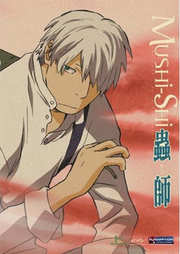
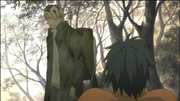
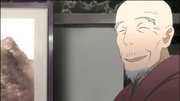
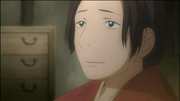
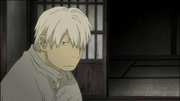
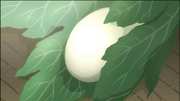


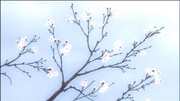
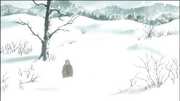
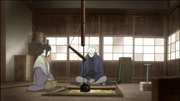
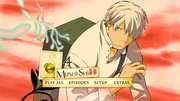



































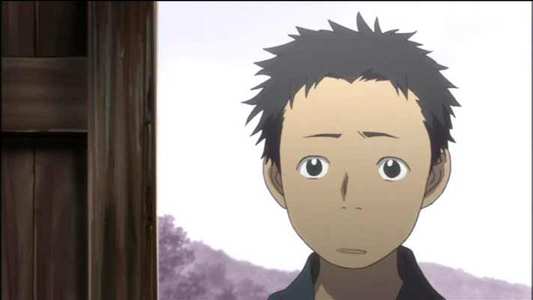

Your Opinions and Comments
Be the first to post a comment!